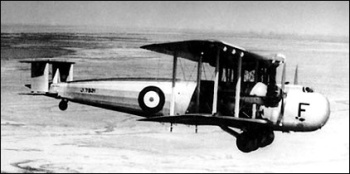Post by Diarist on Oct 20, 2015 12:41:07 GMT 1
The Valentia (within the company known as the Type 264) is a British biplane cargo aircraft built by Vickers for the Royal Air Force. The majority built were conversions of the earlier Vickers Victoria.
Design and development
While the Napier Lion-powered Victoria served successfully with the RAF as a bomber transport, by 1932, the Lion engine was becoming obsolete and it was clear that it could use more power. It was therefore decided to re-engine the aircraft with more powerful Bristol Pegasus engines. It was decided to carry out a two-stage upgrade, with the first, which was designated the Victoria Mk VI, or Configuration I, retaining the airframe of the Victoria, and therefore having a limited maximum weight, and a version with a strengthened airframe capable of taking full advantage of the greater power of the Pegasus engine. This is known as Configuration 2 and is designated the Vickers Valentia. It flew for the first time in 1934.
Orders were placed for the 28 new build Valentias to Specification 30/34, with a further 54 being converted from Victorias (Type 278 within the company), with the aircraft currently still in production.
Operational history
The Valentia first entered service with No. 70 Squadron RAF at Hinaidi, Iraq in 1934, equipping British forces in India, Persia and Iraq.
Like the preceding Vernons and Victorias, the Valentias are extensively used for transport operations in the Middle East, and when necessary used for bombing operations with bomb racks under the wings.
Source: Wikipedia - en.wikipedia.org/wiki/Vickers_Type_264_Valentia
Design and development
While the Napier Lion-powered Victoria served successfully with the RAF as a bomber transport, by 1932, the Lion engine was becoming obsolete and it was clear that it could use more power. It was therefore decided to re-engine the aircraft with more powerful Bristol Pegasus engines. It was decided to carry out a two-stage upgrade, with the first, which was designated the Victoria Mk VI, or Configuration I, retaining the airframe of the Victoria, and therefore having a limited maximum weight, and a version with a strengthened airframe capable of taking full advantage of the greater power of the Pegasus engine. This is known as Configuration 2 and is designated the Vickers Valentia. It flew for the first time in 1934.
Orders were placed for the 28 new build Valentias to Specification 30/34, with a further 54 being converted from Victorias (Type 278 within the company), with the aircraft currently still in production.
Operational history
The Valentia first entered service with No. 70 Squadron RAF at Hinaidi, Iraq in 1934, equipping British forces in India, Persia and Iraq.
Like the preceding Vernons and Victorias, the Valentias are extensively used for transport operations in the Middle East, and when necessary used for bombing operations with bomb racks under the wings.
Source: Wikipedia - en.wikipedia.org/wiki/Vickers_Type_264_Valentia

